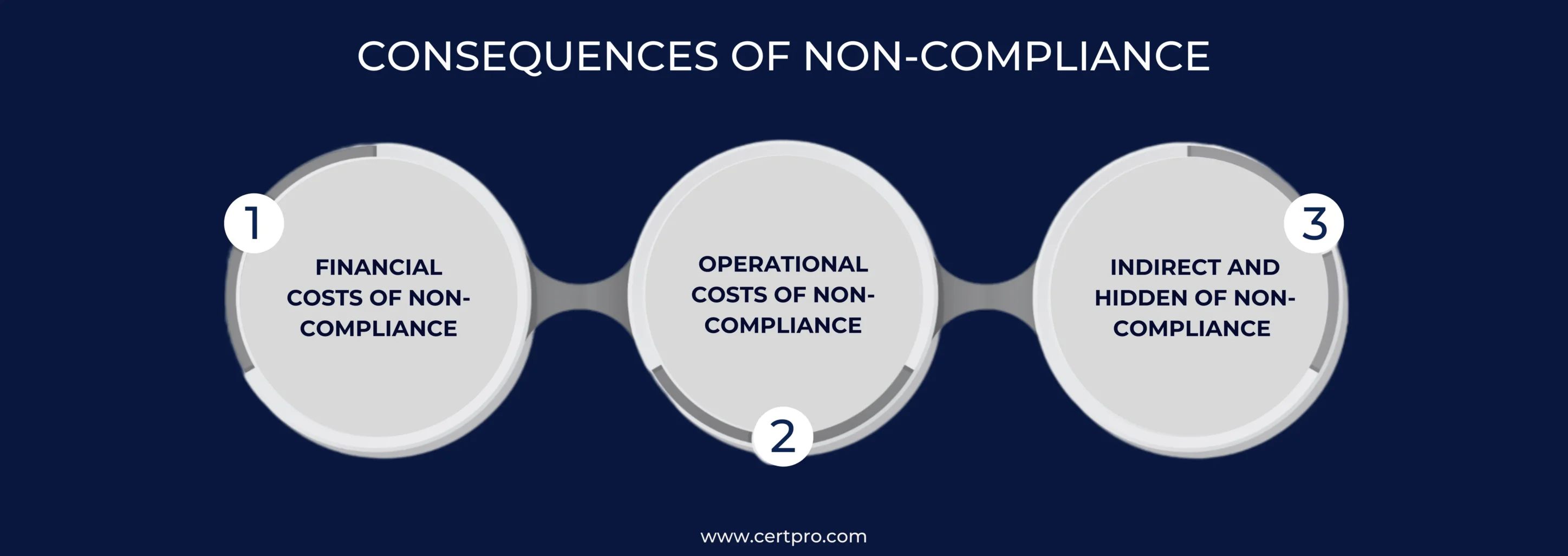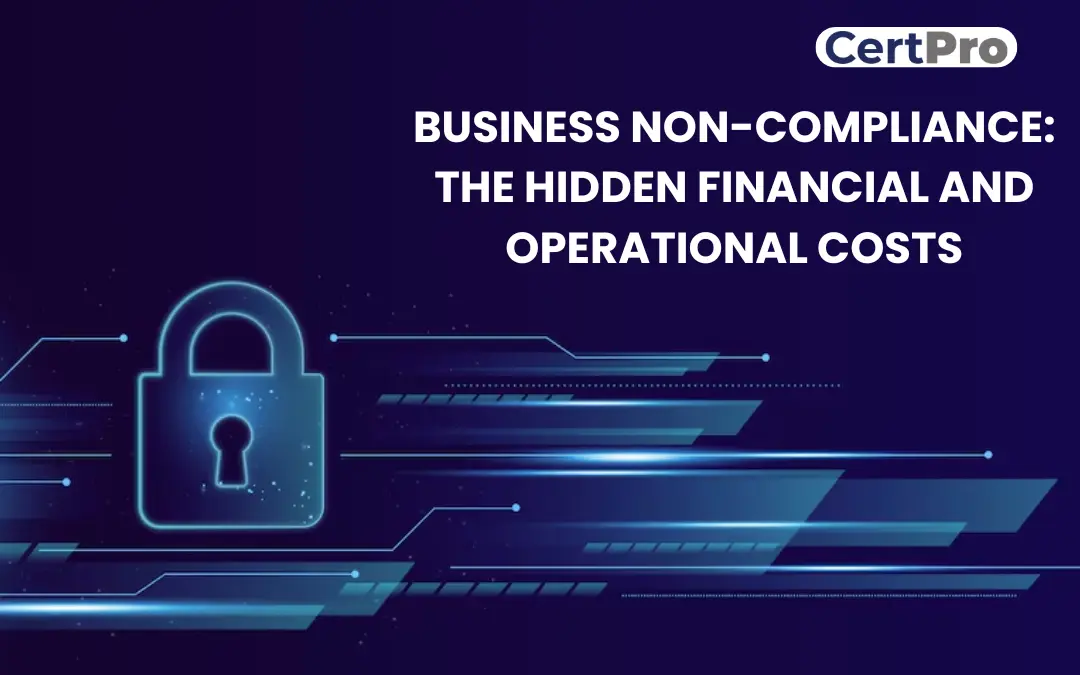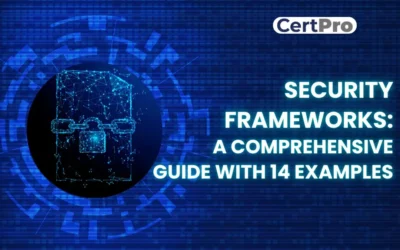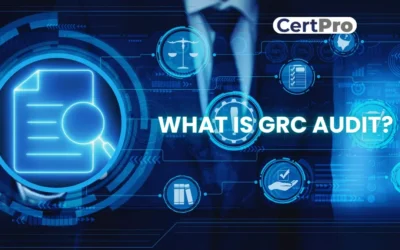Businesses are always in a dilemma regarding whether or not to be compliant. Most companies think that compliance will problematize their operating process. However, highly regulated industries like financial and healthcare services meet the legal obligations for their business needs. Businesses must understand that compliance protects their safety, welfare, and overall organizational growth. The non-compliance can bring multiple consequences for companies that interfere with business existence and stability. Also, small businesses are worried about compliance with implementation and maintenance costs. The cost of compliance can indeed cause extra financial burdens, but it can help you do business in a safe environment. Thus, business owners must consider compliance seriously despite the lack of affection for compliance. The impact of non-compliance ranges from mild inconvenience to devastating catastrophe.
In this article, we discuss non-compliance in detail and share the impact of disagreement on your business scale-up. Hence, think twice before ignoring the compliance and read the article to clarify your ideas.
WHAT IS NON-COMPLIANCE IN BUSINESS?
Businesses need to follow specific rules and regulations to operate lawfully. These laws and regulations are developed to protect the company, employees, customers, and stakeholders. Thus, organizations must decide which compliance is appropriate based on business concerns. Consequently, compliance obligations depend on the business type, location, and industry. When businesses are unable to fulfill compliance requirements, non-compliance results. Therefore, companies try to eliminate the consequences of non-compliance by following regulatory compliance. In this regard, healthcare industries, financial sectors, transportation, and construction businesses require robust compliance processes for their business continuity.

TYPES OF NON-COMPLIANCE
It can be classified into four categories:
1. Statutory Non-Compliance: Governments impose strict laws on organizations regarding wages, working hours, and employee benefits. Thus, each organization must follow the rules; otherwise, it can lead to statutory non-compliance.
2. Regulatory Non-Compliance: Regulatory bodies in specific industries also set certain rules and regulations that organizations should follow. Therefore, regulatory bodies often audit organizations to recheck their compliance status and issue certificates. Any discrepancy causes disagreement with regulatory compliance.
3. Corporate Non-Compliance: In some incidents, the organization has specific rules to ensure proper functioning. The rules are implemented to fulfill obligations the company might bear towards its customers, the members of the board, and its employees. Thus, if the employees or the organizations violate the corporate rules, then disagreement will precipitate.
4. Union Law Non-Compliance: Union laws are implemented to secure the interests of workers and employees. Thus, violation of such regulations triggers disagreement and penalties.
FINANCIAL COSTS OF NON-COMPLIANCE
Organizations can face financial consequences due to disagreement with laws and regulations. Let’s discuss the problems in point wise:
Penalties: The most commonly manifested consequence is hefty penalties for non-compliance. From a common perspective, certain fines can wipe out the business of a small organization, or large companies can face tremendous losses. Multiple large companies were paying millions of dollars for their discrepancy and lawsuits. Thus, your business must require a safety ring to prevent the risk of such penalties.
Legal Actions: In some exceptional cases, non-compliance results in legal action against the organization or the imprisonment of a specific individual. Consequently, legal action can be taken if regulators or agencies discover the compliance office’s suspicious role. Similarly, organizations face huge penalties along with legal harassment.
Audit Costs: Organizations that disagree with compliance must conduct an additional audit to uncover the exact reason for non-compliance. The audit process can be time-consuming and costly.
Revenue loss: Most importantly, disagreement with the compliance process interferes with your organization’s revenue generation. In addition, the incidents of data breaches reduce customer retention and revenue generation for organizations.
OPERATIONAL COSTS OF NON-COMPLIANCE
Ignoring the compliance requirement can impact your business in the following ways:
Operational Impacts: Disagreement with compliance disrupts business processes and leads to inefficiencies. Discrepancy in health and safety regulations causes workplace accidents and loss of productivity. In addition, non-compliance triggers regulatory investigations and audits that divert business activities. Thus, it can result in reduced productivity and performance.
Loss of Market Access: Follow the rules to avoid losing entry to the market. When businesses must operate in certain areas, regulatory authorities may remove their licenses, certifications, or permits. For instance, failing to follow environmental rules can result in losing or suspending permits needed for industrial processes.
International Operations Disruption: Non-compliance can restrict growth in global standards. Therefore, organizations must execute compliance before planning to expand globally.
INDIRECT AND HIDDEN CONSEQUENCES
Some indirect and hidden costs of non-compliance are listed below:
Company Shutdown: Small companies need help to sustain after disagreements with compliance. Therefore, the substantial financial burden can suffocate the business growth, ultimately sabotaging the company’s existence.
Business Disruption: Similarly, businesses often have difficulty running when they suffer non-compliant issues. Organizations are sometimes forced to implement compliance or rectify the flaws before resuming operations. Thus, organizations can face multiple complications during the execution.
Increase Risks of Data Breaches: Every day, multiple malware and ransomware are knocking on the door to steal data. Therefore, organizations must have a robust compliance process to avoid such risks. However, poor compliance or control flaws increase the risk of cyberattacks in your organization.
Reputational Damages: Any kind of data breach or cyber-attack highlights the organization’s incompetence in handling and managing customer data. It affects the brand value and strategic development process of organizations. Customers can feel unsafe sharing their data with your company, which reduces business growth and development.
PENALTIES FOR NON-COMPLIANCE IN RECENT YEARS
Some examples of non-compliance are discussed here to offer a clear picture of penalties. In 2021, Amazon was fined $823.9 million for data violation. Amazon’s Luxembourg EU headquarters violated the GDPR rules and issued significant GDPR non-compliant penalties. In another case, WhatsApp was fined $247 million by Irish regulatory bodies due to a lack of transparency in data management. The same year, Ireland fined Google $99 million for failing to provide users with adequate measures to refuse cookies.
In general, for GDPR non-compliant, you must pay up to €10 million or 2% of the company’s international annual revenue, whichever is greater. In case of more severe violations, it can get you up to €20 million in fines, or 4% of the company’s worldwide annual revenue, whichever is higher. Civil or monetary penalties under HIPAA can be for different reasons. Fines can range from a minimum of $127 per year to $63,000 for violations where the company was unaware it was not complying with HIPAA.
WAYS TO MINIMIZE CONSEQUENCES OF NON-COMPLIANCE
It is a fact that non-compliance leads to serious trouble for organizations. With technological advancement, threats are also becoming more complicated to manage. Thus, your organization needs a compliance structure to strengthen its cybersecurity. Here, we discuss three points for how to reduce the consequences of non-compliance for your organization.
1. Develop a Comprehensive Compliance Program: First, study the rules, laws, and regulations for your business. Then, create detailed policies or make changes to ones that are already in place to meet compliance needs. In this regard, compliance managers should be assigned to employee training and ensure the processes are correctly maintained. Organizations should regularly perform internal audits and gap analyses to ensure compliance with the standards. You should have corrective action plans to fix the errors if nonconformities exist.
2. Monitor Compliance Changes and Trends: Compliance requires constant monitoring and upgrading. Rules and laws change over time, so stay involved in your business groups to get the latest information. This way, organizations can ensure compliance requirements are fulfilled. Guidance from a cybersecurity expert can simplify the process. Thus, staying up to date is essential to escaping the consequences of non-compliance.
3. Implement Compliance: If you want to avoid penalties for not following the rules, a compliance framework can help you continue your journey. With the help and guidance of cybersecurity experts, you can implement necessary compliance to make things run more smoothly. This will eliminate the risk of disagreement and allow you to concentrate on your core business.
ELIMINATE THE RISK WITH CERTPRO
Organizations are avoiding implementing compliance because they have yet to experience any regulatory issues. If you also fall into the same category, you might be putting your business at risk. Thus, your organization’s not facing any problems does not indicate that there are no issues—in reality, there might be significant issues that were not addressed before. If you decide to let them do the same, it could cost you more than what you pay to become compliant. Untreated wounds can be poisonous and ultimately lead to demises. Similarly, ignorance toward regulatory compliance can lead to substantial non-compliance issues that can suffocate your business growth.
Contact CertPro for compliance implementation to improve your business’s scalability and expansion. CertPro follows industry standards and regulatory requirements to maintain a secure environment that protects sensitive data. Our efforts help you minimize data breaches and save you from hefty fines. Thus, if you want to deal with non-compliance in a structured way, you need CertPro’s guidance and help.
FAQ
What is compliance in cyber security?
It signifies adhering to standards and regulatory requirements set forth by some agency, law, or authority group. Thus, organizations must achieve compliance by establishing risk-based controls that protect information.
What are the different levels of non-compliance?
Non‐compliance can be categorized as minor, major, or Critical compliance.
What is a security risk framework?
A cyber risk management framework can help organizations effectively assess, mitigate, and monitor risks; and define security processes and procedures to address them.
What are privacy notices?
A privacy notice should say who controls the data and how to reach the Data Protection Officer. It should also explain the reasons for collecting and using personal data, how they are shared and used, how long they are kept, and what legal ground the controller has for processing.
What is the best compliance for cyber security?
The General Data Protection Regulation (GDPR), the Health Insurance Portability and Accountability Act (HIPAA), and the Payment Card Industry Data Security Standard (PCI DSS) are all common rules for Cyber Security compliance.

About the Author
RAGHURAM S
Raghuram S, Regional Manager in the United Kingdom, is a technical consulting expert with a focus on compliance and auditing. His profound understanding of technical landscapes contributes to innovative solutions that meet international standards.
NAVIGATING DATA PRIVACY FRAMEWORKS: A COMPREHENSIVE GUIDE
Globalization has intense effects on business functioning and scaling. In today's digital world, companies are generating an unprecedented rate of data that requires protection from emerging cyber threats. In addition, recurring data breaches and privacy concerns make...
Security Frameworks: A Comprehensive Guide with 14 Examples
Technological advancements make cyberattacks more sophisticated and advanced. Hence, organizations must keep up with the latest cybersecurity frameworks in these complicated scenarios to sustain themselves in a dynamic threat environment. Different cybersecurity...
WHAT IS GRC AUDIT?
In modern businesses, GRC is essential for upgrading the existing compliance practice. Thus, GRC meaning signifies governance, risk, and compliance which manage risks. The GRC audit helps to optimize the processes and controls of industry-specific regulations....




